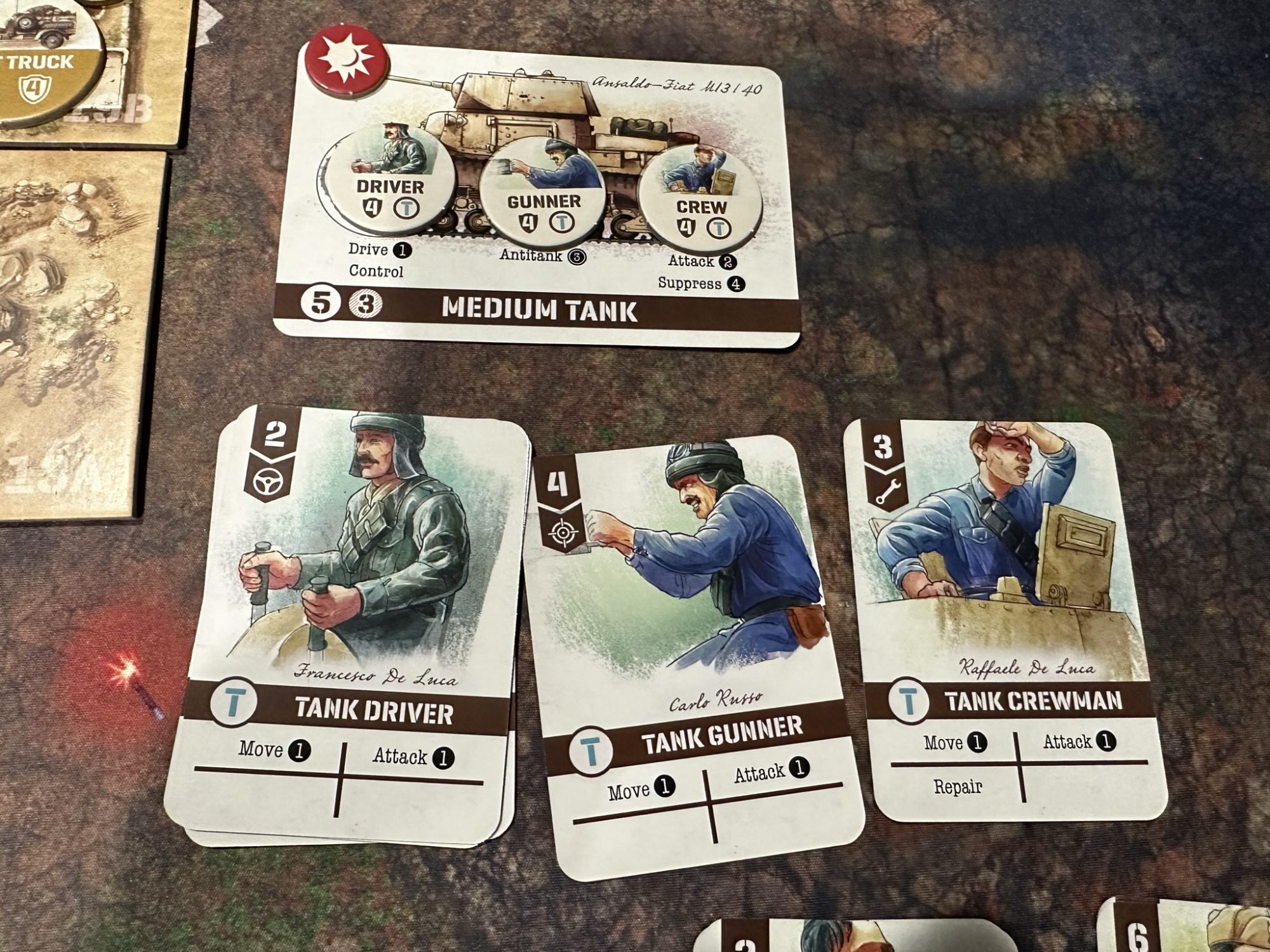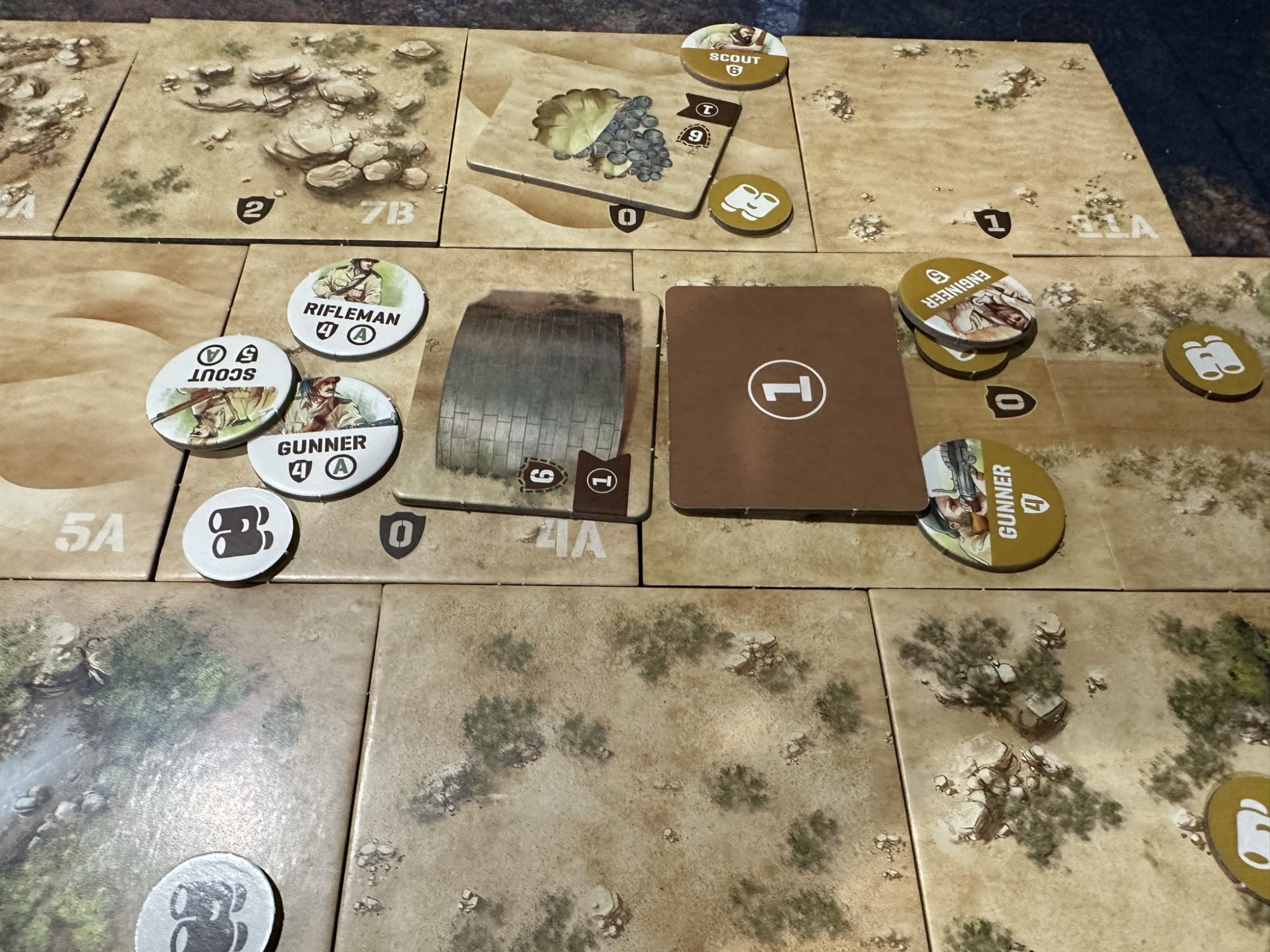World War II games are a dime a dozen. So are deck building games. And yet the Undaunted series by David Thompson and Trevor Benjamin breathes new life into both genres. Undaunted: North Africa is the follow up to the original Normandy and you can feel the game confidently expanding upon a very strong core foundation.
I reviewed Undaunted: Normanday a while back here on Goonhammer and a lot of what I said then holds true for North Africa. The same tension is present in deck structure and card play. Cards have multiple uses, giving you a boost in one way or setting you back in another. What has changed the most, however, is the scale.

In Normandy you are controlling Units that engage in the bloody war of attrition that was the march across Europe. Commanders manage multiple units in multiple squads, reinforces can often come in from off-map, and even the inclusion of mortar signifies that there is a bit of a broad focus.
North Africa zooms in. The Allied player controls Britain’s Long Range Desert Group (LRDG), a small special forces team. Your tokens are accordingly now individuals. They represent a single gunner, an individual Sergeant, or a long Sniper stalking his way across the desert. There are also vehicles. The Italian forces have access to a Tank, and both forces will have access to lighter armored trucks.
The individual focus comes through here as well. Each vehicle has 3 crew spots that are given new Vehicle actions. The driver can, naturally, opt to take a Drive action during their activation which is a great way to zip across the board more quickly. While any soldier can man any space in the light vehicles, the Italian force’s tank requires the use of specialists.

Only a Tank Driver can drive the tank, and only a Tank Gunner can man the powerful Anti-Armor gun that is more effective at taking out vehicles. This means that the LRDG player can focus fire a particular Specialist and disable a critical element of the tank, while their flexibility means anyone can hop behind the wheel of the Pilot Truck.
The best part of North Africa is the scenario design opened up by the individual focus. The introduction of Special Forces means victory does not have to be defined by the general control of area and objectives. North Africa opens with the LRDG attempting to demolish 3 structures on the board. Represented via overlays, these structures can only be destroyed by a few of the LRDG’s available cards.

A later scenario gives the LRDG a bit of flexibility. Points can be scored by taking control of an enemy fortification; all the points necessary for victory in fact. The catch is the space is defended by a fully operational medium tank along with support infantry. A petrol depot on the far side of the map is available for destruction and a lower-point control objective however getting there means hoofing it across the map or attempting to drive through the enemy fortification.
On the other side the Italians need to eliminate specific characters and must do so in the face of anti-tank vehicles and a saboteur/sniper duo skulking through the map unrestricted by things like scouting requirements and fog of war. Weighted down by the larger warmachine, the Italians represent the stronger force but lose out in flexibility.

In one notable game, the Italian forces overcommitted. Confident in their firepower they attempted to jump out and eliminate the two critical LRDG specialists with an early surge of aggression. Unfortunately, the LRDG player was able to survive the onslaught with some timely bolstering (bringing in cards from the supply, making your forces more resilient).
Meanwhile the LRDG sniper took position in the hills and managed to snipe the lone Rifleman left on defense. While anti-tank forces occupied the Italian tank the LRDG Staff Sargeant jumped into a light vehicle by himself, drove pell-mell through the fire, for a surge of his own. Victory for the LRDG.

The asymmetry shines throughout this title. Individual soldiers on the Italian side play a bit stronger than the LRDG’s specialists, however they also tend towards larger decks which are less reactive. The LRDG forces like the sniper and saboteur can move around the map unrestricted by scouting needs which offers flexibility, however the Italians have access to that tank and things like a Recon Plane which enables long-range strikes.
Ultimately this series shows true genius innovation. Somehow Thompson and Benjamin have turned a familiar deckbuilding mechanism into an abstraction for troop morale, supply lines, fog of war, and inspiring command. Normandy remains an easy recommendation and North Africa highlights the core systems flexibility. Expansions focusing on Stalingrad and the Battle for Britain are also available and are likely to make their way to my shelf.


